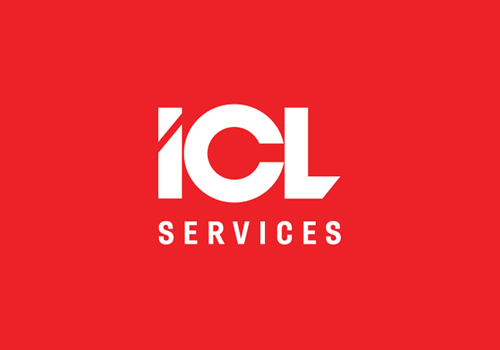Готово!
Скоро материал придет на указанную электронную почту. Также подписывайте на нас в Facebook
Ok
The leaders in terms of investment are identified
The leader in terms of investment in Russia in the next three years will is IoT (Internet of Things). Experts believe that IoT will be represented most widely in manufacturing sector and transport companies. In addition, the top five in investment activity will include energy, consumer segment (retail) and public sector. It is noteworthy that a good growth rate will show cross-industrial solutions.
For 2018, the majority of implemented solutions in the field of IoT are the business models of the first generation —Internet of Things 1.0. This model is characterized by an emphasis on the installation of various sensors and organization of their connection. Of course, services and applications for analyzing the collected information are also used, but the «depth» of data processing is small.
In the transition to the Internet of Things 2.0 model, the focus will shift to analytics. The benefits of the cloud model, machine learning tools and cognitive computing will be used. In this case, IoT platforms will more actively use open APIs for exchanging data with other systems, as well as various open source applications.
What 2018 has taught us or practical steps on how to begin the introduction of digital technologies in 2019
Let us summarize the digital results of 2018 and tell you which IT technologies have become particularly relevant, how we estimate the past year and that the time to make the next year more «digital» has come.
The main conclusion of 2018 was that the majority of organizations of the high-tech complex of Russia (HTC) have a rather low level of adaptability to digital transformation. One of the main reasons for this condition is the lack of competent specialists in modern digital agendas at enterprises.
The market itself will not change the situation
2018 gave an understanding of the role of predictive technologies in the management process to many executives in companies, which is an essential feature of the digital transition. The technologies of additive manufacturing are recognized as the most significant innovations in the digitization of the production process. In most cases, this concerns organizations that have invested in new equipment.
Although as of today, about two-thirds of the organizations in the manufacturing sector are not yet ready to use digital representation of the product. These companies still have a fairly low level of adaptability due to the low level of maturity of digital competencies among key employees and the inclusion of individual elements of digital transformation in the practice of strategic management of organizations. At the same time, they almost all understand that the advent of digital technology is not a matter of choice. It is like seasons. Digital technologies will soon become an inevitable part of a daily routine. The question is only in seasonal effect (adaptability of technologies for specific processes of companies).
It is also necessary to remember that the market itself will not change the situation: the owners of the majority of such industrial enterprises are not able to finance the necessary technical re-equipment of production. For large plants, these are dozens — hundreds of millions of dollars. It is often cheaper to build new plants with new equipment from scratch.
With investment resources available to companies in the processing industries, such digitalization costs are insane. They can only automate the financial sector, and in production they, as a rule, can only indefinitely extend the operating life of existing equipment, possibly purchasing additional critical elements.
We reduce the influence of the human factor
So what awaits us in the next couple of years in the face of limited funding for digitalization projects in various companies?
With the highest probability in the near future, such technologies will be introduced and implemented at the enterprises of HTC (high-tech complex) of Russia in the external environment, which will cover the next three blocks of changes.
First, this is the deployment of digital infrastructure (electronic marketplaces, broadband). Secondly, digital threats (the whole block of cyber threats and the tangle of processes leading to the degradation of natural intelligence). Thirdly, the development and availability of new production and management technologies based on digital achievements.
However, first of all, certain conditions must be fulfilled, and they are applicable to all types of companies:
- Computerize workplaces and production equipment.
- Use modern software for pre-production, production management and resource management.
- To create a single information space at the enterprise, with the help of which all automated enterprise management systems, as well as industrial equipment, production personnel will be able to exchange information in a timely manner.
The most important thing is to get rid of the influence of the human factor. For example, the introduction and use of MDC (Machine Data Collection) systems will allow monitoring the work of all production facilities (equipment, jobs for key workers, service providers, etc.) for production management purposes. The important thing is that everything should become transparent. This is the foundation for the transition to digital production.
Digitalization: technology selection and implementation
To date, large amounts of information in the production are read from the instrumentation and recorded on servers. Practice and research show that subsequently, on average, only 5% of this information is used.
For most large Russian enterprises, mass production is typical (commodity). In this case, the main focus of digitalization in the choice of technologies will be aimed at reducing operating costs, improving quality and timeliness of supply to the end user.
For enterprises producing special or customized products, digital technologies will, first of all, allow the development of products that best meet the needs of the client. This will be possible by embedding sensors in products that will share information about their use.
Three practical steps to start introducing digital technologies as early as 2019:
- Implement technological measures to increase the use of available information when making management decisions from 5% to at least 30%. These activities include: structuring the information received, its classification, determining the levels at which it can be useful for making management decisions, developing algorithms for the further movement of the processed information, its storage and using the obtained data to analyze and compare the performance of the production process in the future.
- To involve external experience (partners, business consultants, etc.) to determine priority measures and projects on the digitization of production. We need to act quickly now, but new technologies require new competencies, and a drastic change in production management processes can lead to system crashes and panic. Outside experience and external experience are extremely important for manufacturing companies that are embarking on transformation for the first time.
- Launch mini-projects (pilots) to adapt, test and deploy new technologies at production sites. Under uncertainty, the «try and adjust» strategy works better. It is safer and more efficient than developing a detailed plan for many months to come.
How to choose the most «necessary» technology
How to navigate this? How to choose the technologies that are needed precisely for industrial enterprises? Study success stories, learn about the experiences of other enterprises in different industries. There are many examples: for example, BMW plant with the use of augmented reality technologies and robots, and the Russian KAMAZ, which has chosen the course of universal robotization and automation of its production, digital warehouses, delivery and many others.
The main condition for choosing the direction of digitalization is the applicability of certain technologies must be justified from the point of view of the economy and the company’s future. Properly chosen transformation model makes technology work in the right direction: change the product itself or reduce costs and increase the level of service for customers.
Related news
- 1 April
New "Turnkey monitoring" service launch
«Turnkey monitoring» allows our customers to use an RTU solution customized by ICL Services experts for IT infrastructure monitoring.
- 4 August
We support hundreds of software projects. so the concept of «maintainable code» is one of the most principal for us.
- 26 August
What CEO of the ICL Group Victor Dyachkov told to readers of “Business Online”?
Online conference with the CEO of our company was recently held in the office of electronic business newspaper «Business Online». Here we publish the most interesting answers to questions from the readers.
- 18 April
Why do we need virtual data centers?
The best ways to optimize hardware expenses.
- 27 April
Who is faster: clouds vs it market?
The demand for cloud computing in Russia is real.
- 14 June
ICL Services entered into a partnership with Cegid
As part of this partnership, ICL Services will promote Yourcegid Retail Y2 solution into the Russian market.
- 20 September
Work processes in ICL Services: 5 steps for achieving the best results
A proper approach to workflow management creates a basis for the introduction of other components of the "social platform" at the company.
- 23 January
An educational session was held for semi-finalists of “Leaders of Russia” contest
On Saturday, an educational session for the semifinalists of the “Leaders of Russia” contest was held in Ministry of Youth Affairs of The Republic of Tatarstan. Alexandra Lebedeva, the winner of the first “Leaders of Russia” contest from Kazan, provided inspiration for the meeting.
Stay informed
Subscribe to our newsletter and keep up with our latest news

